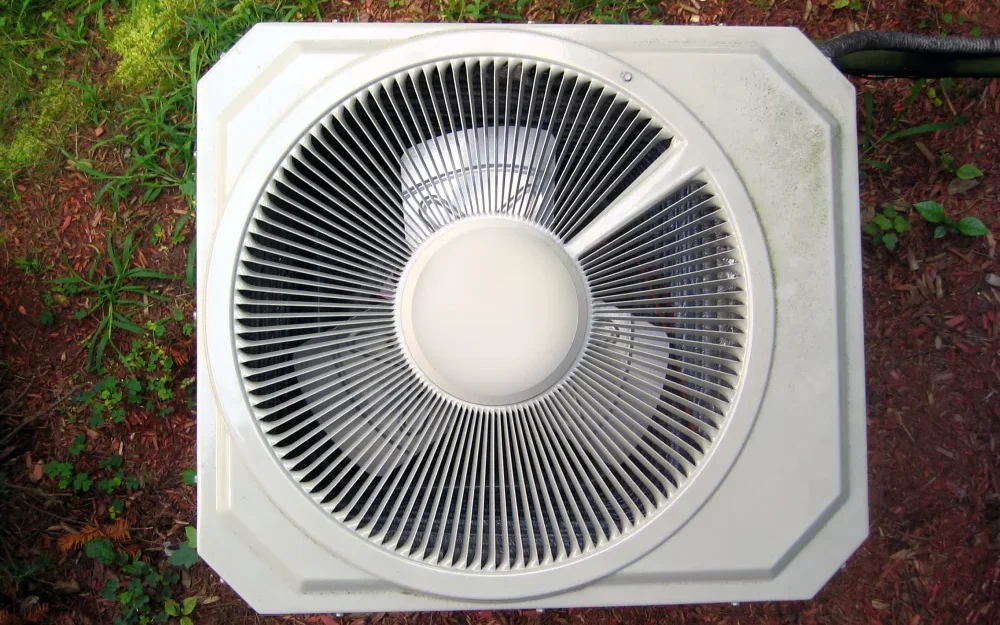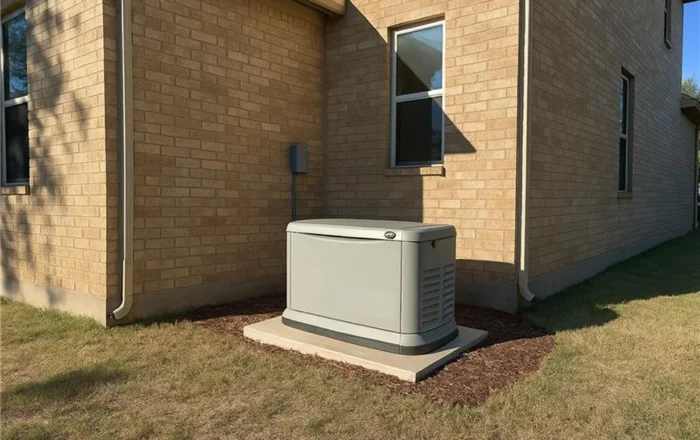How to Choose a Generator for Your Home
6 minute readHow to choose the right generator for your Texas home
Home > Blog > Complete AC Maintenance Checklist for Central Air & Window Units
6 minute read • Last update November 2024

A well-maintained air conditioning system is your home’s unsung hero when temperatures rise during the hot Texas summers. Regular AC maintenance extends the lifespan of your HVAC system while helping you save money on energy bills and costly repairs.
In this handy guide, we’ll cover everything you need to know about air conditioner maintenance for both central systems and window units. You’ll learn:
Only a qualified HVAC contractor should perform a full AC tune-up and service. However, you can take care of basic air conditioner cleaning and maintenance yourself. Whether you want to learn how to clean a window air conditioner or a central AC system, the tools you’ll need are the same:
With your toolkit assembled, you’re ready to tackle basic AC maintenance in preparation for the cooling season.
A central system controls the temperature throughout your home through a network of ducts. The cooling system consists of an outdoor condenser unit, extensive ductwork, several indoor vents, and a thermostat. The following central AC maintenance tips help to ensure proper airflow and enhanced indoor air quality.
Knowing how to clean an AC filter is essential, as this simple task is your first defense against poor airflow in your home. Check each air filter monthly and remove dust buildup to ensure optimal performance. If filters look dirty, replace them—most HVAC specialists recommend changing filters every three months.
Set the thermostat to the correct summer temperature and test to ensure the system responds correctly. If you have a programmable thermostat, ensure the timings suit your household’s needs.
Remove any debris or vegetation that might block airflow and affect the system’s efficiency. Use a garden hose on a gentle spray setting to clean the condenser coil. Avoid high pressure, which may damage the coil fins.
Learning how to clean AC coils is critical, as this is the part of your system that cools the air. What’s more, it’s easier than the average homeowner expects. Simply open the access panel and gently remove dust from the coil and surrounding area using a soft bristle brush.
The refrigerant lines are attached to the outdoor AC unit. Look for signs of refrigerant leaks, such as ice or oily residue. If levels appear low or there’s a visible refrigerant leak, call a licensed HVAC professional to handle repair and recharging.
Check the condensate drain line for clogs that could cause water to back up and damage your system or property. Then, flush the drain line using a mild bleach and water solution to prevent mold growth.
Use a microfiber cloth to clean the blower motor and fan blades. Look for signs of wear or damage that could reduce energy efficiency, and tighten or replace any loose or damaged parts as needed.
Ductwork is typically located in your attic, basement, and wall cavities. Examine and vacuum all visible sections, using duct tape or HVAC sealant to repair small leaks. Contact professional services for a full inspection if you suspect larger leaks in hard-to-see areas.
Check all electrical connections and components for signs of corrosion or loose wires. Tighten, replace, or contact an HVAC technician accordingly, depending on what you find. It’s also a good idea to run a few tests to ensure the system powers on and off correctly.
Window AC units are individual room air conditioners designed for cooling smaller spaces. Each unit is mounted on a window frame with a front-facing panel inside and the back portion hanging outside. Unlike central systems, there’s no internal ductwork, meaning cool air is delivered directly into the room where each indoor unit is installed.
Even though they’re smaller systems, learning how to clean a window AC unit is still essential to ensure safe operation and reduced energy costs. Here are the steps to follow.
Here’s how to clean an air conditioner filter on a window AC setup:
To keep your system running smoothly, you should replace rather than clean filters every three months.
A window AC system has two separate coils to clean: the indoor evaporator coil and the outdoor condenser coil. Use a soft brush to clean both sets to prevent dust or dirt buildup from restricting airflow.
Clean blades improve air circulation and reduce the strain on the unit. Remove the cover and wipe the fan blades with a microfiber cloth to remove dirt that could lead to increased energy consumption.
Check for proper alignment and straighten any bent fins using a fin comb. Then, gently brush away dust or debris. Take care not to apply excess pressure that may rebend the fins.
Inspect the window seals where the unit contacts the window frame and use weatherstripping or caulk to seal any gaps or cracks.
When your system is in operation, the residual condensate drains into a pan at the bottom of the unit. You’ll need to empty and clean the condensate drain pan regularly to prevent mold or mildew buildup—especially in humid conditions.
Inspect each wire and connector carefully. Look for signs of wear, such as frayed wires, corrosion, or discoloration, which can indicate overheating. Tighten any loose connections to ensure proper operation.
Turn the unit on and set the thermostat to your desired temperature. Monitor how quickly it cools the room and whether it cycles correctly. If you have a programmable thermostat, check the timing settings are appropriate.
If you live above ground level, you’ll need to consider how to clean air conditioner exteriors safely. If the task would endanger you, leave this job for a professional AC maintenance expert. On easily accessible units, use a damp cloth to wipe down the exterior casing. For stubborn grime, use a mild detergent solution.
Decide whether to remove each unit entirely or cover in place. Uninstalled units should be stored in a dry, indoor location. Units left in place should be covered to prevent dust, moisture, and insects from entering. Ensure the cover is secure, but allow some airflow to prevent condensation buildup.
Cleaning air conditioner units and easily accessible components yourself can prolong your system’s lifespan and save you money on callouts and repairs. However, knowing how often to service an air conditioner and contacting a professional for in-depth regular maintenance is still recommended. For tasks beyond basic maintenance, here are some common questions about professional AC servicing.
Experts recommend a comprehensive service annually. The best time is in spring before the season changes and your units become heavily used.
Signs that indicate it’s time to call a professional include:
Exact costs can vary significantly depending on where you live, the air conditioner unit size, whether you have a central or window AC setup, and the materials and labor required.
An annual AC tune-up usually costs between $70 and $250, with most homeowners paying an average of around $130.
Maintaining your home’s cooling and heating system is a great first step toward improving efficiency and reducing energy costs. But to truly maximize your savings, pairing regular AC maintenance with a cost-effective electricity plan can make a big difference.
At BKVE, we specialize in helping Texans cut utility costs with straightforward, gimmick-free options. Our Bluebonnet plan, for example, can save homeowners up to $800 or more per year.
Ready to start saving? Enter your zip code to discover the perfect electricity plan for your home today!
Graham Lumley, Digital Marketing Manager at BKV Energy, leads digital and traditional marketing strategies, focusing on educating Texans about the state's deregulated energy market. With over 8 years of marketing experience, he creates content to help consumers understand and save on their energy bills, bringing a fresh and dynamic approach to the industry.

How to choose the right generator for your Texas home

Energy Saving Tips Home Improvement
Choosing the right energy-efficient door can help Texas homeowners reduce cooling costs and improve home comfort year-round.
Get $50 off your electric bill!
Use code BKVEJOINUS50
Enter your zip code to shop BKV Energy's affordable, fixed-rate Texas electricity plans. Use the promo code for $50 off your electric bill.